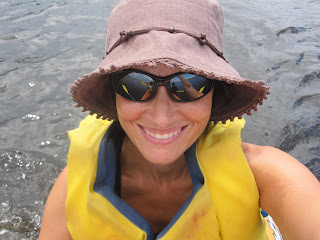This is our second typhoon warning in the last two months. Typhoon season in Japan is typically between August and September. Typhoons tend to hit areas in Kyushu, Shinkoko and Okinawa. The effects of these storm systems can bring torrential rains and high winds. Fortunately, a typhoon only lasts for approximately two days.
Before summer, we were given a checklist on what to have on hand in the event of a typhoon. I did look at the list and bought some things just in case the storm hit and we were unable to get supplies at our local store, or on base. I was most concerned about making sure we had enough water and non-perishable food. Luckily, we had the rest of the items on the list such as: extra batteries, candles, paper plates and disposable utensils, can opener, wipes, First Aid kit, charged cell phones, etc. Just because the last typhoon changed direction, we are still unsure what Tropical Storm Talas will send our way. Mother Nature has not been too kind to Japan this year, so hopefully we will make it through this storm unscathed.
Here is additional information on emergency preparedness and tracking tropical storms:
www.fema.gov
www.redcross.org
www.wunderground.com










